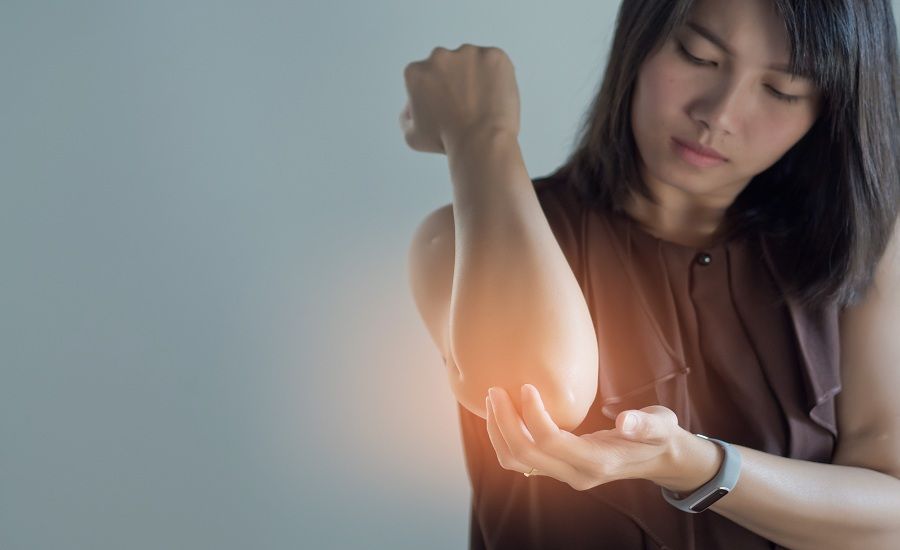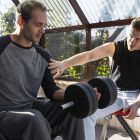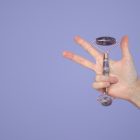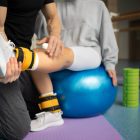Tennis elbow is a painful condition in which the outer side of your elbow causes pain while doing outward movements it is usually caused by excessive use of muscles (when they are not properly trained and strengthened) or because of repetitive motions. Major stake in rehabilitation is supporting your muscles during activities to avoid further injury and gradually strengthening them.
IMPORTANT POINTS TO BEGIN YOUR REHABLITATION WITH-
- Education is the foremost important thing to begin your management with as you have to deal with your condition 24*7.
- Keep in mind all the important do’s and don’ts and then begin your specific strength training under guidance of a professional.
- The exercises should be started with less repetitions and less holding time (to avoid any stress to the tendon).we can gradually increase the reps and hold time, start adding weights/therabands.
- While doing exercises always aware about the posture and the right way. Talk with your physiotherapist regarding this.
- Be patient and stay with the treatment, the pain will reduce in a few weeks, but it takes 6-12 months for the tendon to heal. Keep doing exercises and follow the treatment protocol.
DO’S:
- The first line of defence is rest. All the activities which causes pain has to be limited or stopped.
- Cold helps a lot in reducing inflammation and limiting pain. You can rub ice cubes, use gel based cold packs or frozen peas pack to treat swelling and inflammation. It should be done 5-10 min 3-4 times/day.
- Contrast hydrotherapy also helps in boosting blood circulation. In this alternate hot and cold therapy has to be done for 15-20 mins a day.
- Stretching on regular basis is advisable as directed by your physiotherapist.
- Modification in ergonomics is needed to minimize strain on the elbow. E.g. Experiment with chair height, mouse location , and keyboard position as using a computer heavily may aggravates the condition.
- Use pillows under your arm while sleeping to reduce the tension in arm muscles and keep the arm supported.
- Elbow orthosis/braces/strap can be of great use if activities has to be limited and not refrained. The compress the upper forearm and absorb the forces which are transmitted through soft tissues to the point of pain on the outside of elbow. This allow the injured area to heal faster.
- If the injury is, as a result of playing tennis or squash, one should consult an expert or a sports trainer , to check whether there is need to modify the technique or the equipment (loosely strung rackets, stiff rackets, oversized rackets etc.)
- Physiotherapy is very beneficial in treating tennis elbow treatment and the techniques range is based on individual requirements which includes electrotherapy, dry needling, cupping, elbow kinesio taping, muscle stretches, joint mobilisation, neural mobilization, myofascial releases and strengthening exercises. It helps in improving the strength, flexibility and blood flow to the tendons and muscles, that will help to facilitate the healing process around the area. It will also help to restore the range of motion, muscle length and movement patterns of the elbow joint.
- OTC drugs like ibuprofen, NSAIDS can also be taken as if necessary.
- In case of unmanageable pain or the condition which is not responding to physiotherapy; Steroid injections is the treatment of choice
- Surgery is the last option in case of chronic conditions, if all the conservative treatments failed to cure the tennis elbow. But only few percentage of patients require surgical method.
DON’T’S:
- Avoid repetitive activities of elbow or any of the daily life activities which causes pain has to be limited. Some of the daily life activities includes turning doorknobs, sweeping the floor, slicing and preparing food and other activities including swimming, painting, using a screwdriver, excessive use of computers, plumbing, carpentry etc..
- Never apply ice directly for more than a minute or a two at a time. It can result in ice burn (frostbite).
- Avoid sleeping on the affected arm as it reduces the blood flow to injured tendon and results in delayed healing.
- Don’t sit in a slouched fashion to do desk work.
- Don’t play though the pain and expect it to be better.
- Limit the exercises which hurt you. It will make you worse instead of strengthening. Some good examples to quote are push ups, bench press, forearm dumbbell curls, barbell extensions, powerlifting, throwing medicine ball, swinging battle ropes or kettlebells.
Disclaimer
This information should not be used as a substitute for professional diagnosis and treatment as this is for informational purposes only. One must consult their healthcare provider before making any healthcare decisions. Any damage, loss or injury suffered by an individual as a result of reliance on the information contained on this site is neither the responsibility nor the liability of Orthocure Clinics.

